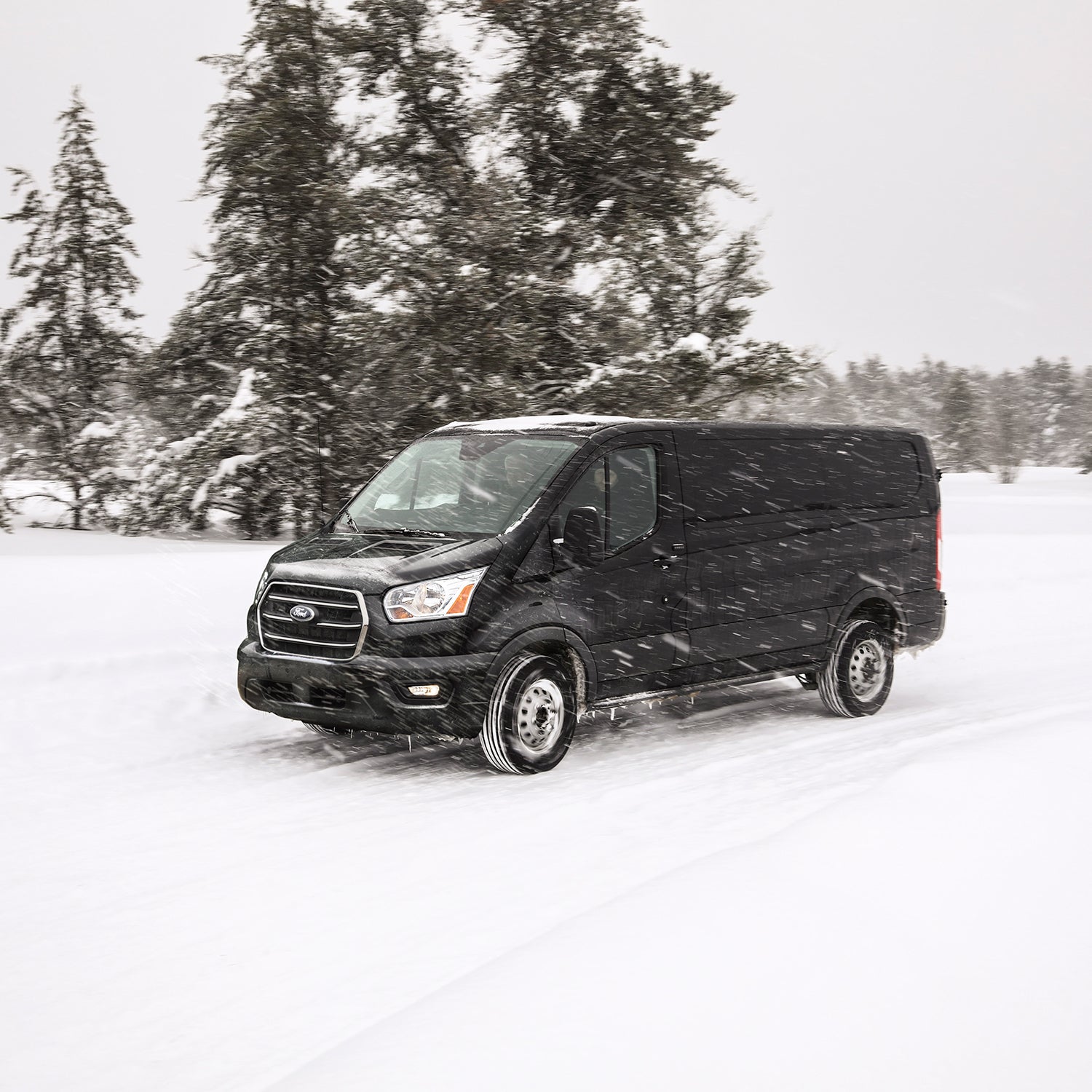Ford’s full-size Transit cargo van, already popular in the #vanlife scene, is about to get even more so. Earlier this month, the automaker that the van will come with available all-wheel drive for the 2020 model year. While it isn’t the heavy-duty four-wheel-drive system that many may have been hoping for, the introduction of an all-wheel-drive Transit is a big deal.
History in the U.S.
First, some context. The full-size recreational van market in the U.S. is dominated by two main players: the Transit and the Mercedes-Benz Sprinter.
The Transit was introduced in the U.S. for the 2015 model year, replacing the outdated and inefficient E-Series. While it caught on in a wide range of industries—from delivery companies to airport-shuttle services to RV upfitters—the Transit was not available with all-wheel drive. That put it at a major disadvantage among vanlifers when compared to the AWD Sprinter model that was introduced in 2015. This changes with the updated 2020 Transit.
What Changes
Let’s make one thing clear: while all-wheel drive turns the Transit into an objectively more capable vehicle, the van still lags behind traditional 4×4 vehicles in terms of adventure readiness. When engaged by the driver, a four-wheel-drive system splits power 50/50 between the front and rear wheels, meaning that both axles are forced to turn at the exact same speed, which is often necessary for propelling the vehicle over rough terrain. All-wheel-drive systems, like those in the Transit, on the other hand, typically engage only when the vehicle’s on-board computer deems it necessary and send torque only to the wheels that need it. But the computers aren’t always right, and uneven surfaces can confuse them, leading to lots of wheel spin and loss of forward momentum.
“We anticipate the AWD Ford Transit being sufficient for on-road needs and for use on the occasional forest road,” says Brent Hawk, sales director at , a van-conversion outfit in Pennsylvania. “But what we’re hearing from RV manufacturers we work with is that many recreational customers still want traditional four-wheel drive, which allows you to go farther off-road than any all-wheel-drive system.”
The Sprinter all-wheel drivetrain does offer an optional low-range mode, which is great for conquering obstacles that need to be taken at slow speed. But Hawk says that it’s still primarily reactive, engaging at the behest of the on-board computer. In comparison, everyday pickup trucks like the new Ford Ranger have proactive four-wheel-drive systems that can be engaged prior to coming upon an obstacle.
The Transit’s system lacks low range altogether and is more closely related to the road-oriented all-wheel drive you’ll find in a family crossover. That said, it will have selectable modes for muddy, rutted, or slippery surfaces that should make up slightly for its mechanical shortcomings. According to Ford, it can also send “100 percent of available torque to the front wheels to help prevent slipping on loose surfaces.”
Also notable, Ford has opted to leave the AWD Transit’s ride height untouched, claiming it wants to keep the vehicle as easy as possible to get into and out of. But that means a set of meaty all-terrain tires is probably out of the question. The all-wheel-drive Sprinter, on the other hand, is about six inches higher than its two-wheel-drive cousins, allowing for larger tires and greater off-road capability.
Finally, while the all-wheel-drive Sprinter comes with diesel only, the AWD Transit will be a strictly gas-powered affair—a bit disappointing given the fuel-economy and torque benefits of diesel.
For what it’s worth, though, given that it’s a more basic package than the Sprinter, the AWD Transit is likely to cost less than its German competitor, which starts at just under $47,000. We’ll know for sure when pricing is announced closer to the vehicle’s launch date in the fall.
What It Means
While this new Transit won’t allow you to rock crawl, it will still afford many of the day-to-day advantages of all-wheel drive. This means better traction on rain-slicked pavement, not having to chain up at the base of a snowy canyon on your way to the ski resort, and greater confidence when it comes time to venture down a forest road to a remote campsite. It still lags behind the Sprinter and is still a ways away from being overland ready, but the AWD Transit will be more approachable for a lot of vanlifers and road-trippers.


